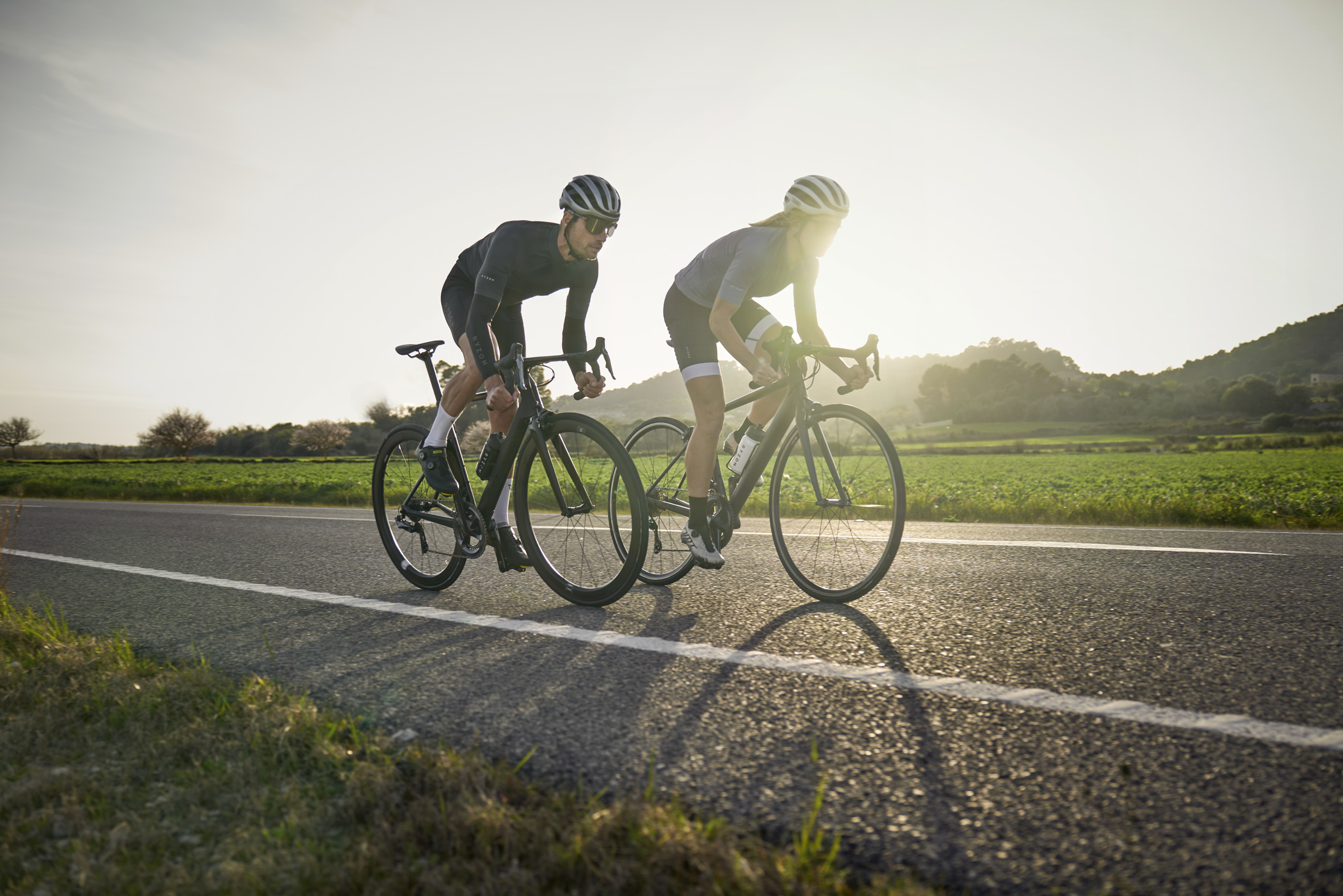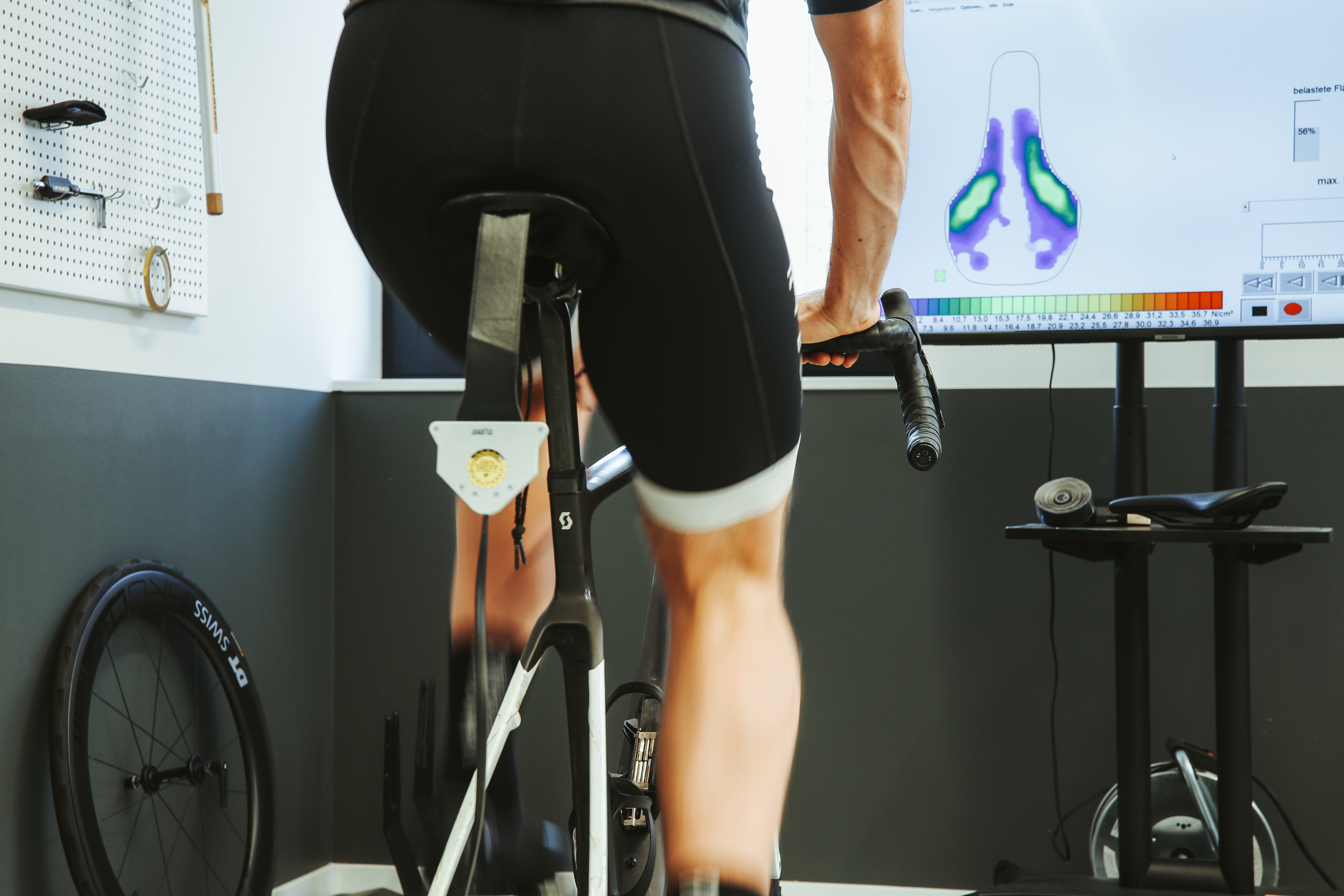What is VO2max?

VO2max is a key indicator of a person’s aerobic capacity. It measures how much oxygen the body can take in, transport, and utilize during maximum exertion. Expressed as the volume of oxygen per minute, it represents the maximum oxygen uptake. The higher the VO2max, the better developed the cardiovascular system is, as the body can deliver more oxygen to the working muscles and use it more efficiently. This value is significant in cycling and other endurance sports, where the ability to process oxygen is crucial for performance.
What Does VO2max Indicate?
The quality of oxygen uptake—its availability—is central to endurance performance. Without oxygen, muscles can only function for a few seconds. Aerobic metabolism determines endurance capacity in cycling and all other endurance disciplines. VO2max, the maximum amount of oxygen the body can utilize under stress, is one of the most important metrics for assessing aerobic fitness. It reflects several physiological processes involved in oxygen transport and utilization:
- Oxygen uptake in the lungs
- Oxygen transport via the bloodstream to the muscles
- Oxygen utilization and metabolism in muscle cells
VO2max doesn’t just show how much oxygen can be absorbed—it reveals how well the cardiovascular, respiratory, and muscular systems work together to absorb, transport, and metabolize oxygen. Endurance training, including cycling, leads to adaptations in the cardiovascular system, improving organ function and efficiency. These adaptations are reflected in the VO2max value. The higher the VO2max, the greater the aerobic capacity of the cyclist, allowing them to sustain higher workloads for more extended periods.

What Does VO2max Stand For?
The abbreviation VO2max consists of:
- V = Volume (amount of oxygen)
- O2 = Oxygen (the molecule made of two oxygen atoms)
- max = Maximum capacity
Together, VO2max stands for the maximum volume of oxygen the body can process during intense physical activity.

What’s the Difference Between Absolute and Relative VO2max?
VO2max can be expressed as either an absolute or a relative value:
Absolute VO2max:
Measured in liters per minute (L/min), this shows the total oxygen uptake of the body. It helps understand overall aerobic capacity, but doesn’t account for body weight.
Relative VO2max:
Measured in milliliters per minute per kilogram of body weight (ml/min/kg), this value allows comparisons between individuals of different body sizes. For example, a smaller person may have a higher relative VO2max than a larger person, even if the larger person has a higher absolute VO2max.
Relative VO2max is especially important in sports like cycling, where body weight significantly affects performance. Many modern sports watches display VO2max—but be aware that they typically show the relative VO2max to allow comparisons across time and between athletes.

What Is a Good VO2max for Untrained Women and Men?
VO2max values vary based on age, gender, and genetics. For untrained individuals, average values are:
- Women: ~27–35 ml/min/kg
- Men: ~35–40 ml/min/kg
These are general guidelines and may vary. Men typically have higher VO2max values due to greater muscle mass and heart volume.
With training, cyclists can significantly improve their VO2max. For trained athletes, the following values are considered good:
- Women: 50–60 ml/min/kg is considered good in cycling. Elite female cyclists may exceed 60 ml/min/kg, with world-class athletes reaching even higher.
- Men: 60–70 ml/min/kg is considered good. Professional male cyclists often exceed 70 ml/min/kg, with some reaching over 80 ml/min/kg.
Example: Tadej Pogačar, who won the Tour de France, Giro d’Italia, and the World Championship road race in 2024, reportedly has a VO2max close to 90 ml/min/kg.
These values can vary individually, but in general, the higher the VO2max, the greater the aerobic capacity and endurance potential.
How Is VO2max Calculated?
VO2max is calculated using the formula:
VO2max = Q × a-vO2 diff
Here’s a breakdown:
Q (Cardiac Output): The amount of blood pumped per minute. It’s the product of heart rate (HR) and stroke volume (SV): Q = HR × SV
a-vO2 diff (Arteriovenous Oxygen Difference): This measures how much oxygen is extracted from the blood by the muscles. Oxygen-rich blood travels through arteries to the muscles, where it’s metabolized. The now oxygen-poor blood returns via veins. The a-vO2 diff shows how effectively the body extracts and uses oxygen in the mitochondria (the powerhouses of muscle cells).
The greater the difference between oxygen-rich and oxygen-poor blood, the better the oxygen utilization. So, the higher the heart rate, stroke volume, and arteriovenous oxygen difference, the higher the VO2max.
These maximum values are typically reached under full exertion. The most accurate way to measure VO2max is through specialized lab tests.

How Is VO2max Measured?
As mentioned earlier, many modern sports watches display VO2max. However, these readings are based solely on heart rate and heart rate variability, providing only an approximate estimate of VO2max. Accurate measurement typically takes place under laboratory conditions through performance diagnostics using an exercise test, such as a cycling ergometer test.
During this test, the intensity is gradually increased until the individual reaches maximum exertion. Oxygen consumption is measured using a breathing mask, analyzing the difference between inhaled oxygen and exhaled carbon dioxide. Heart rate, breathing rate, and power output are continuously recorded throughout the test. This method provides precise results and allows for an accurate determination of VO2max.
In addition to measuring VO2max, lactate levels can also be assessed during such a step test using small blood samples taken from the earlobe. Combined with all collected data, this allows for insights into aerobic and anaerobic metabolism, performance thresholds, and other physiological stress parameters. This enables a precise determination of individual training zones for cycling or running.

How Can Cyclists Improve Their VO2max?
There isn’t a single “correct” way to improve VO2max through training. Instead, it’s about finding the right combination of workouts across different training zones. VO2max is trained whenever enough oxygen is processed—meaning the stimulus on the cells is sufficiently high. This means that VO2max training depends on both the duration and intensity of the workout.
Long, low-intensity rides can stimulate mitochondrial development just as effectively as intervals at or above the anaerobic threshold.
Take Zwift, a popular cycling training platform: VO2max-focused workouts often begin with a 15-minute warm-up, followed by short, intense intervals well above FTP (Functional Threshold Power), and end with a cooldown.
Here are some example workouts (excluding warm-up and cooldown):
- Classic 5 x 5 Intervals:
5 minutes at 105–110% FTP, followed by 5 minutes recovery at 50% FTP. Repeat 8 times. - 30/30 Intervals:
30 seconds at 120–130% FTP, 30 seconds recovery at 50% FTP. 10 repetitions per set, 3 sets total. - Tabata Intervals (very intense):
20 seconds at 130–150% FTP, 10 seconds recovery. 8 intervals per set, 4 sets total, with 4 minutes of easy recovery between sets. - 2-Minute VO₂max Ramp-Up:
Start at 100% FTP and increase power by 5% every 30 seconds until reaching 120%. Follow with 2 minutes of recovery at 50% FTP. Repeat 6–8 times. - 4 x 8-Minute Threshold Intervals:
8 minutes at 105–110% FTP, with 4 minutes recovery at 50% FTP between intervals.
These workouts are examples and can be very intense. They should only be performed by cyclists with a solid fitness base. A proper warm-up and cooldown are essential to prevent injury. Beginners may want to adjust the duration or intensity of the intervals.

Conclusion
VO2max is a crucial indicator of aerobic capacity and endurance for cyclists and other endurance athletes. It shows how effectively the body can absorb and utilize oxygen during maximum exertion. Both absolute and relative VO2max values are helpful, with the relative value allowing comparisons across different body weights. Good VO2max values vary depending on gender, fitness level, and sport. VO2max is typically measured under lab conditions using specialized tests, but can also be roughly estimated through calculations or wearable devices.